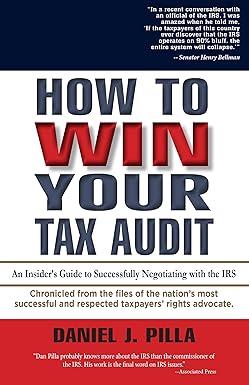Answered step by step
Verified Expert Solution
Question
1 Approved Answer
profit before bad debit is $ __________ 1. Profit before bad debit is $_________ 2. A periodic count of every item in stock is the
profit before bad debit is $ __________
1. Profit before bad debit is $_________
2. A periodic count of every item in stock is the first, fundamental principal of sound ____________ management.
3. The objective of inventory management is yo replenish __________ in such a way that accociated order and holding costs are kept to a minimum in order to enhance profibility.
4. The __________ _________ policy provides coverage for losses suffered from any of a firm's trade receivables that becomes uncollectible.
5. The _________ policy is insurance a business takes against the catastrophic loss in cash that might occur when a large receivable becomes uncollectible because of debtor bankruptcy.
6. The _________ of trade receivables is a report showing how long trade receivables have been outstanding by giving the percentage of receivables past due for one month, two months, etc.
7. The credit manager uses the _________ system to analyze the creditworthiness of potential customers.
8. One of the activities of the credit manager is to set _______ terms which determines how quickly the cutomer is expected to pay the account.
9. The ________ ________ ________ process means the transferring of funds between cutomer and supplier by using the internet or any other electronic medium.
10. __________ is a concept dealing with the amount of funds tied up in cheques that have been written but are still in process and have not yet been collected.
11. In order to manage cash effectively, a firm must synchronize its cash inflows with its cash _________ on a monthly basis.
12. The _________ account consists of holding and short-term deposits.
13. The main objective of __________ management is to maintain a reasonable amount of cash so that profitability is not affected and payment of short-term commitments is possible.
14. The cash conversion efficiency ratio is calculated by dividing cash flow from operations by __________.
15. The cash _____________ efficiency ratio measures the efficiency with which a business converts revenues to cash flow within its operations.
16. The days of working capital measurement is calculated by dividing inventories plus trade receivables less trade and other payables by _________ ________ ________.
17. The objective of the days of working capital measurements is to calculate the number of days of working capital a business holds in order to meet its average daily __________ requirements.
18. The cash break-even point can be defined as the number of units or revenue that must be reached in order to cover total cash ________ costs.
19. To calculate the cash break-even point, you need to deduct __________ from fixed costs so that this sum can be divided by the contribution margin.
20. You can find the revenue break-even point by dividing fixed costs by the __________ ratio.
21. You can find the break-even point in units by dividing fixed costs by the ________ contribution margin.
22. To calculate the break-even point, you need to divide the fixed by the PV ratio or the unit ________ margin.
23. Changes in _____________ costs can alter the PV ratio.
24. The __________ range means that costs (fixed and variable) apply to certain level of production.
25. To calculate the PV ratio, you need to divide the __________ margin by revenue.
26. The letters PV stands for ___________ ratio.
27. The contribution margin is the level of profit that contributes for paying________ costs.
28. The contribution margin is calculated by finding the different between revenue and the ____________ costs.
29. Break-even point is the level of production where revenue equals ___________ costs.
30. The main factors that affect levels of profit are volume of production, ___________, costs(fixed and variable) and changes inproduct mix.
31. Rent and interest charges are considered __________ costs.
32. _________ costs change in a disproportionate way with output levels.
33. Costs that fluctuate directly with changes in volume of production are referred to as __________ costa.
34. ___________ costs remain constant at varying levels of production.
35. ____________ analysis is a tool used for analyzing how volume, price, product mix, and product costs relate to one another.
Step by Step Solution
There are 3 Steps involved in it
Step: 1

Get Instant Access to Expert-Tailored Solutions
See step-by-step solutions with expert insights and AI powered tools for academic success
Step: 2

Step: 3

Ace Your Homework with AI
Get the answers you need in no time with our AI-driven, step-by-step assistance
Get Started


